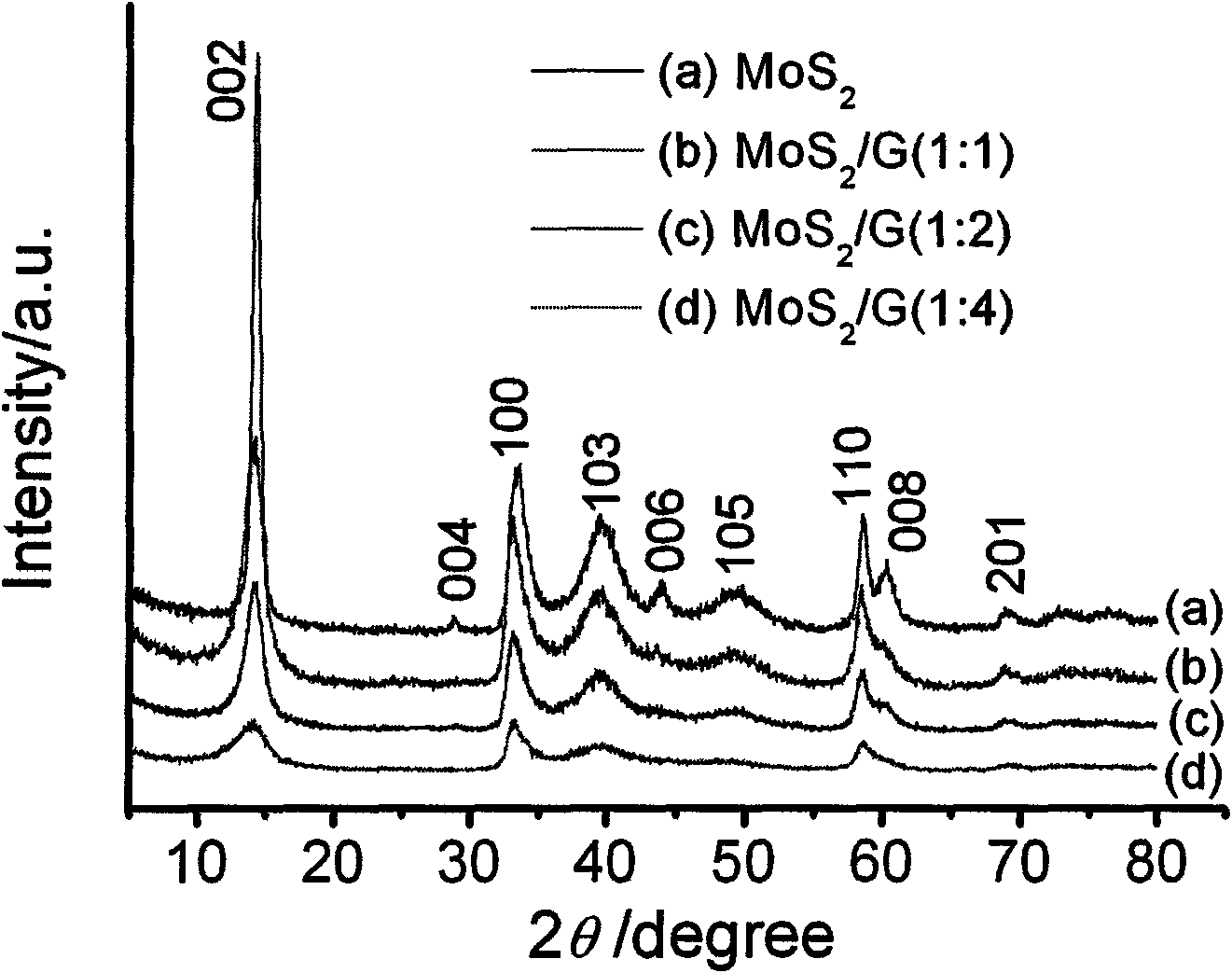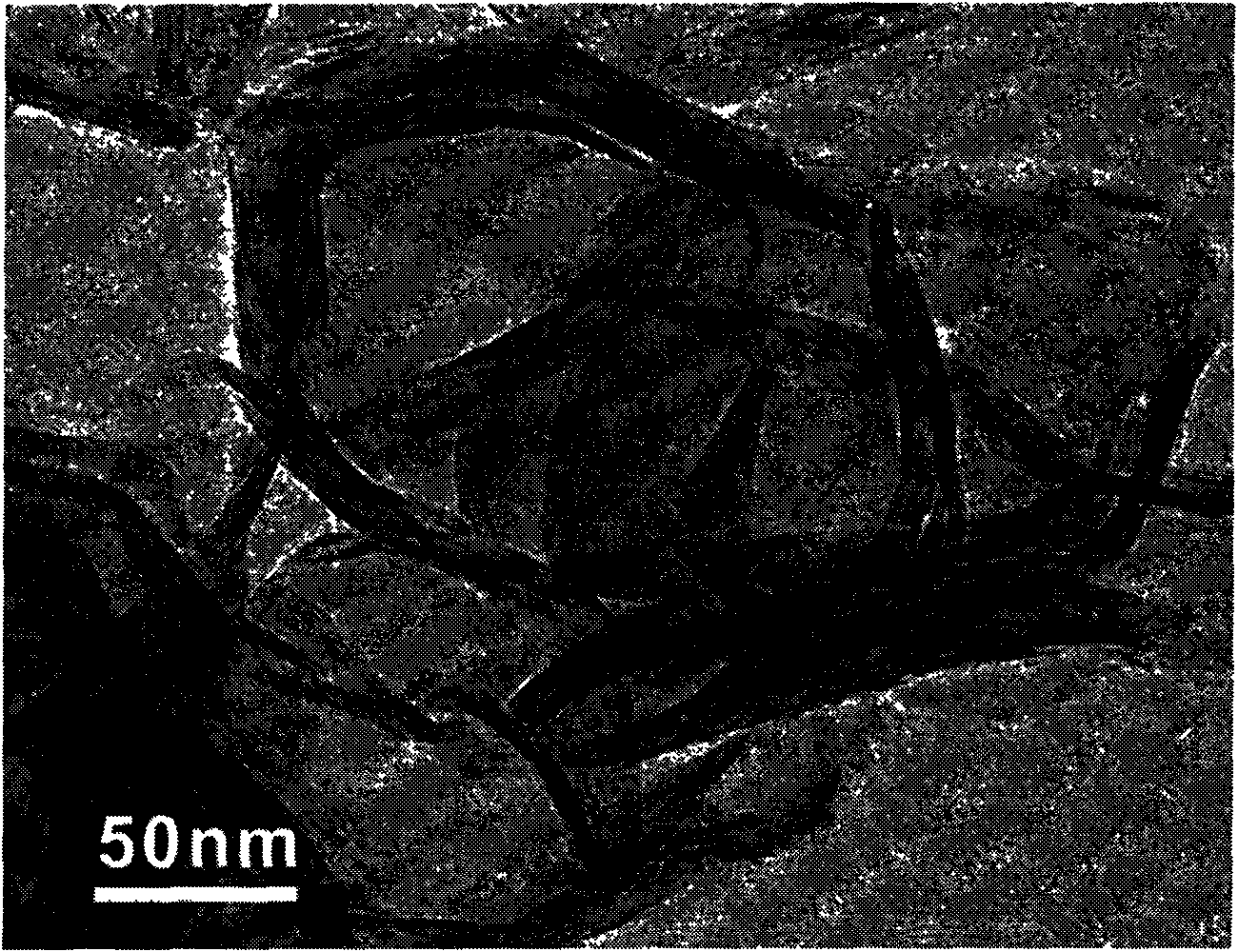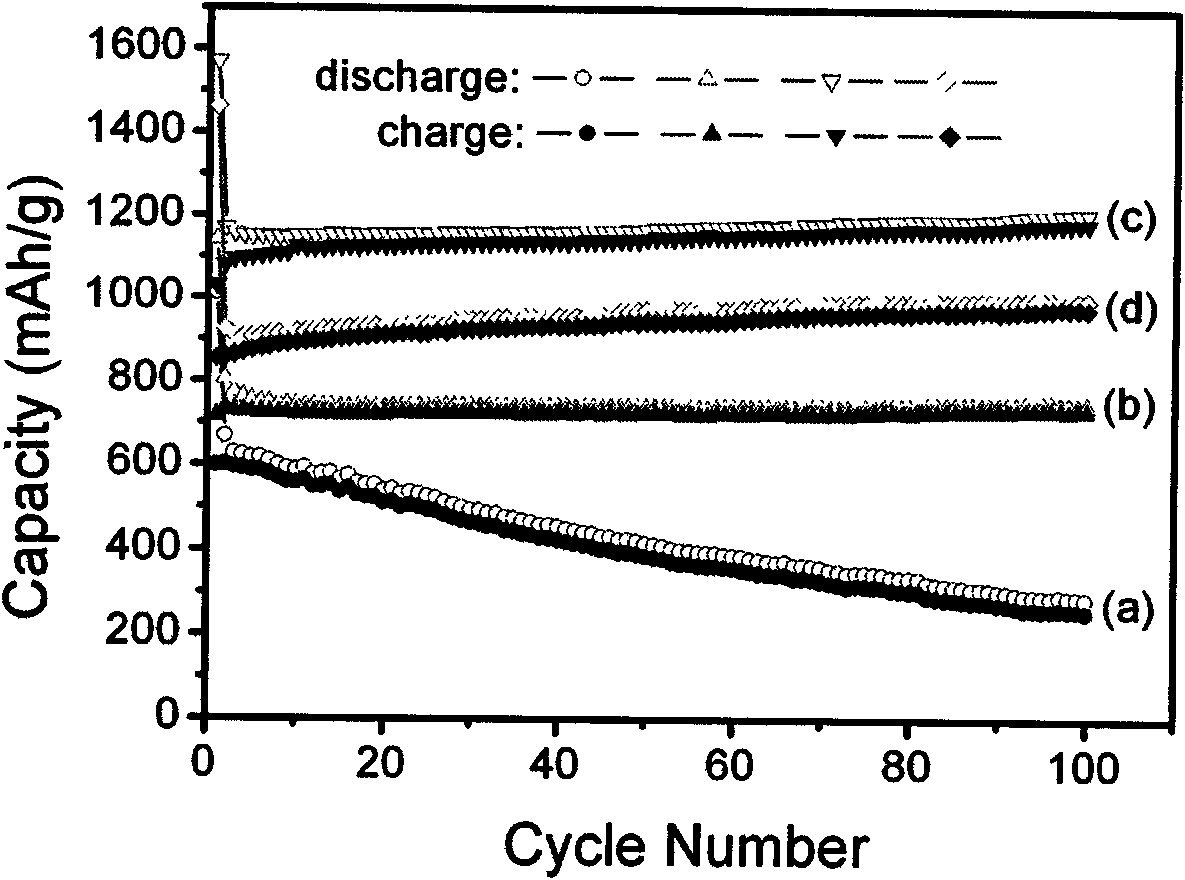Graphene/MoS2 compound nano material lithium ion battery electrode and preparation method thereof
A composite nanomaterial, lithium-ion battery technology, applied in the direction of non-aqueous electrolyte battery electrodes, etc., to achieve the effect of enhancing electrochemical performance, mild reaction conditions, and strong mechanical properties
- Summary
- Abstract
- Description
- Claims
- Application Information
AI Technical Summary
Problems solved by technology
Method used
Image
Examples
Embodiment 1
[0034] Graphene / MoS 2 Composite nanomaterial lithium ion battery electrode preparation method:
[0035] 1) Preparation of graphite oxide nanosheets: Disperse 1.25mmol (0.015g) of graphite powder into 20mL of concentrated sulfuric acid in an ice bath at 0°C, and add 0.03g of KMnO 4 , the added KMnO 4 The mass of graphite is 3 times that of graphite, stir for 30 minutes, the temperature rises to about 30°C, add 45ml of deionized water, stir for 20 minutes, add 10ml of 30% H 2 o 2 , stirred for 5 minutes, centrifuged, and repeatedly washed with a mass concentration of 5% HCl solution, deionized water and acetone to obtain graphite oxide nanosheets;
[0036] 2) Dissolve 1.25mmol (0.303g) sodium molybdate in 63ml of deionized water to form a 0.02M solution, add 6.25mmol of L-cysteine and stir evenly, the mixture of L-cysteine and sodium molybdate The ratio of mass is 5.0: 1, then the 1st) step is added in this solution with the prepared graphite oxide nanosheet of graphite ...
Embodiment 2
[0042] Graphene / MoS 2 Composite nanomaterial lithium ion battery electrode preparation method:
[0043] 1) Preparation of graphite oxide nanosheets: Disperse 2.5mmol (0.03g) of graphite powder into 25mL of concentrated sulfuric acid in an ice bath at 0°C, and add KMnO 4 , the added KMnO 4 The mass of graphite is 4 times that of graphite, stir for 40 minutes, the temperature rises to about 33 ° C, add 50ml of deionized water, stir for 25 minutes, add 12ml of H2O with a mass concentration of 30% 2 o 2 , stirred for 5-10 minutes, centrifuged, and repeatedly washed with a mass concentration of 5% HCl solution, deionized water and acetone to obtain graphite oxide nanosheets;
[0044] 2) Dissolve 1.25mmol (0.303g) of sodium molybdate in 63ml of deionized water to form a 0.02M solution, add 7.5mmol of L-cysteine and stir evenly, wherein the amount of L-cysteine and sodium molybdate The ratio of the amount of substance is 6: 1, then the graphite oxide nanosheets prepared by th...
Embodiment 3
[0050] Graphene / MoS 2 Composite nanomaterial lithium ion battery electrode preparation method:
[0051] 1) Preparation of graphite oxide nanosheets: Disperse 5.0 mmol (0.06 g) of graphite powder into 25 mL of concentrated sulfuric acid in an ice bath at 0 °C, and add KMnO 4 , the added KMnO 4 The mass of graphite is 4 times that of graphite, stir for 50 minutes, the temperature rises to about 35°C, add 50ml of deionized water, stir for 30 minutes, add 20ml of H2O with a mass concentration of 30% 2 o 2 , stirred for 15 minutes, centrifuged, and repeatedly washed with a mass concentration of 5% HCl solution, deionized water and acetone to obtain graphite oxide nanosheets;
[0052] 2) Dissolve 1.25mmol (0.303g) sodium molybdate in 63ml deionized water to form a 0.02M solution, add 15mmol of L-cysteine and stir evenly, the amount of L-cysteine and sodium molybdate The ratio is 12: 1, then the 1st) step adds in this solution the graphite oxide nanosheet that the graphite of...
PUM
 Login to View More
Login to View More Abstract
Description
Claims
Application Information
 Login to View More
Login to View More - R&D
- Intellectual Property
- Life Sciences
- Materials
- Tech Scout
- Unparalleled Data Quality
- Higher Quality Content
- 60% Fewer Hallucinations
Browse by: Latest US Patents, China's latest patents, Technical Efficacy Thesaurus, Application Domain, Technology Topic, Popular Technical Reports.
© 2025 PatSnap. All rights reserved.Legal|Privacy policy|Modern Slavery Act Transparency Statement|Sitemap|About US| Contact US: help@patsnap.com



